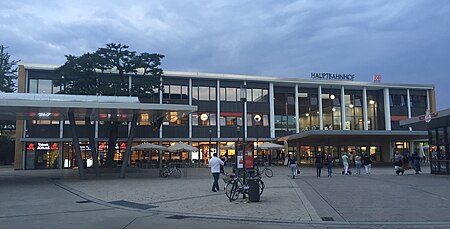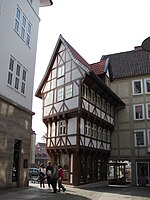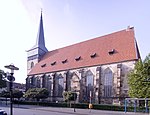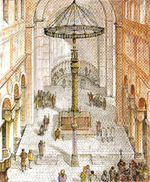Hildesheim Hauptbahnhof
Buildings and structures in HildesheimHannover S-Bahn stationsRailway stations in Germany opened in 1846Railway stations in Germany opened in 1961Railway stations in Lower Saxony

Hildesheim Hauptbahnhof (German for Hildesheim Central Station) is the main railway station for the city of Hildesheim in Lower Saxony, Germany. The station opened in 1961 and is located on the Lehrte–Nordstemmen, Hildesheim–Brunswick and Hildesheim–Goslar railway. The train services are operated by DB Fernverkehr, Erixx, Metronom and NordWestBahn.
Excerpt from the Wikipedia article Hildesheim Hauptbahnhof (License: CC BY-SA 3.0, Authors, Images).Hildesheim Hauptbahnhof
Lüntzelstraße, Hildesheim Stadtmitte (Stadtmitte/Neustadt)
Geographical coordinates (GPS) Address Nearby Places Show on map
Geographical coordinates (GPS)
| Latitude | Longitude |
|---|---|
| N 52.160555555556 ° | E 9.9538888888889 ° |
Address
Hildesheim Hbf
Lüntzelstraße
31134 Hildesheim, Stadtmitte (Stadtmitte/Neustadt)
Lower Saxony, Germany
Open on Google Maps










